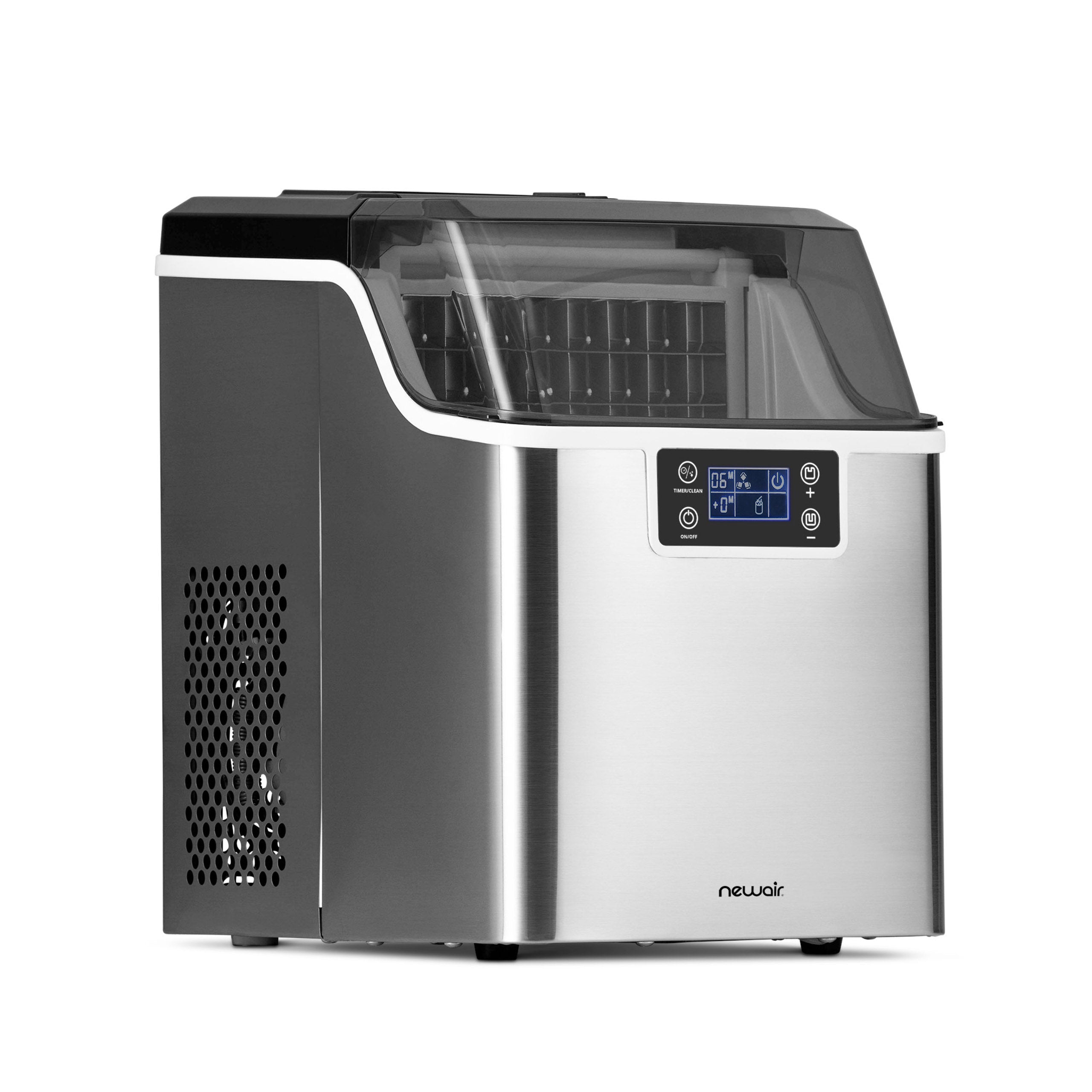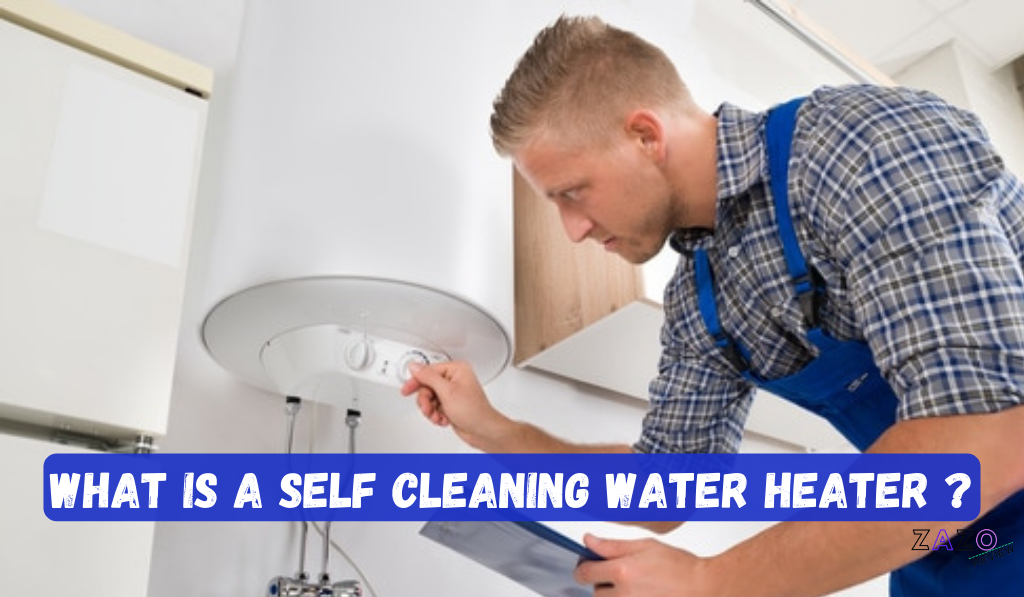A self-cleaning water heater is a type of water heater equipped with a curved dip tube that swirls the water to agitate sediment, preventing it from settling in the tank. This innovative design helps to reduce sediment build-up and ensures the water heater operates efficiently over time. What is a Self Cleaning Water Heater
By continuously circulating the water, self-cleaning water heaters minimize the need for manual flushing and provide cleaner, higher-quality drinking water. Whether powered by electricity or gas, these water heaters offer a convenient and low-maintenance solution for households. With their self-cleaning capabilities, they are worth considering for those seeking a hassle-free and reliable water heating system.
Self Cleaning Water Heaters Unveiled
A self-cleaning water heater is a type of water heater that prevents sediment build-up in the tank. It uses a curved dip tube to agitate the water, keeping sediment from settling. This results in cleaner and more efficient water heating.
Introduction To The Self-cleaning Water Heater Concept
The concept of self-cleaning water heaters has revolutionized the way we think about maintaining our hot water tanks. Traditional water heaters often suffer from sediment build-up, which can affect their efficiency and lifespan. However, self-cleaning water heaters are equipped with innovative technology that actively prevents sediment from settling in the tank.
The Problem Of Sediment Build-up In Traditional Water Heaters
Traditional water heaters face a common problem – sediment build-up. Over time, minerals, dirt, and other debris settle at the bottom of the tank, forming a thick layer of sediment. This sediment not only reduces the efficiency of the water heater but also increases the risk of damage and decreases its overall lifespan. If left untreated, sediment build-up can lead to costly repairs or even the need for a complete replacement of the water heater.
One of the main reasons for sediment accumulation is the absence of proper movement in the tank. Traditional water heaters rely on the static nature of the water, allowing sediment to settle undisturbed. This lack of movement creates an ideal environment for sediment to settle and gradually build up.
Ensuring Maximum Efficiency With Self-cleaning Water Heaters
Self-cleaning water heaters have been designed to tackle the problem of sediment build-up head-on. These innovative appliances utilize a curved dip tube, which serves a vital role in maintaining the cleanliness and efficiency of the tank.
The curved dip tube in self-cleaning water heaters is specifically engineered to create a swirling motion in the tank. This motion agitates the water, preventing sediment from settling and ensuring it remains in suspension. By constantly circulating the water, self-cleaning water heaters effectively disrupt the favorable conditions for sediment build-up.
As a result of this continuous movement, sediment is unable to settle at the bottom of the tank and instead gets carried out through the drain valve during the regular operation of the water heater. This mechanism not only keeps the tank clean but also helps to maintain the heating efficiency, improving the overall performance of the water heater.
Conclusion
The innovative concept of self-cleaning water heaters has revolutionized the way we approach water heater maintenance. By incorporating a curved dip tube that creates a swirling motion in the tank, self-cleaning water heaters effectively prevent sediment build-up. This revolutionary design ensures maximum efficiency, prolongs the lifespan of the water heater, and minimizes the need for manual maintenance. With self-cleaning water heaters, you can enjoy hot water without worrying about the negative effects of sediment accumulation.

Credit : www.youtube.com
Key Components And Operation
A self-cleaning water heater is designed with a curved dip tube that swirls the water, preventing sediment from settling in the tank. This unique feature helps reduce buildup and extends the lifespan of the heater.
Overview Of A Self-cleaning Water Heater’s Anatomy
A self-cleaning water heater consists of several key components that work together to ensure efficient operation and prevent sediment buildup. These components include a curved dip tube, an anode rod, and a self-cleaning mechanism. Understanding the anatomy of a self-cleaning water heater is crucial in comprehending its operation and benefits.
Curved Dip Tube
One essential component of a self-cleaning water heater is the curved dip tube. This tube is connected to the cold water inlet and extends down into the tank. Unlike traditional straight dip tubes, the curved design of this tube plays a vital role in stirring the water and preventing sediment from settling at the bottom of the tank. By creating a swirling effect, the curved dip tube ensures that any sediment gets mixed with the water, allowing it to be flushed out of the tank during regular usage.
Anode Rod And Its Role
Another critical component of a self-cleaning water heater is the anode rod. The anode rod is typically made of magnesium or aluminum and is suspended in the tank. Its primary function is to attract minerals and other corrosive elements in the water, protecting the tank from rust and extending its lifespan. While the anode rod helps reduce sediment, it’s important to note that regular draining is still advisable to remove any accumulated debris.
How The Self-cleaning Mechanism Functions
The self-cleaning mechanism in a water heater operates through a combination of the curved dip tube and water swirling process. As water enters the tank through the curved dip tube, the unique design causes it to swirl, agitating any sediment that may have settled at the bottom. This constant swirling action prevents sediment from accumulating and ensures that it remains suspended in the water, ready to be flushed out during normal usage.
Water Swirling Process
The water swirling process in a self-cleaning water heater works by utilizing the circular motion created by the curved dip tube. As cold water enters the tank, it is forced to move in a circular pattern due to the curved design of the dip tube. This swirling action ensures that sediment and debris remain suspended in the water, preventing it from settling at the bottom of the tank. When hot water is drawn from the tank, the suspended sediment is flushed out, maintaining the cleanliness and performance of the water heater.
In conclusion, the key components of a self-cleaning water heater – the curved dip tube, anode rod, and self-cleaning mechanism – work together to prevent sediment buildup and ensure enhanced efficiency. The curved dip tube creates a swirling effect in the tank, preventing sediment from settling, while the anode rod attracts minerals and corrosive elements. By understanding the operation of these components, homeowners can experience the benefits of a self-cleaning water heater with minimal maintenance and improved longevity.
Implementing Self Cleaning In Your Home
Incorporating a self-cleaning water heater in your home can be a game-changer when it comes to ensuring clean and efficient hot water supply. These innovative appliances are designed to reduce sediment buildup and prolong the lifespan of your water heater. In this section, we will explore key factors to consider when implementing self-cleaning technology in your home.
Deciding Between Electric Or Gas-operated Models
When selecting a self-cleaning water heater, one of the first decisions you’ll need to make is whether you prefer an electric or gas-operated model. Both options have their advantages, so it’s essential to evaluate your specific needs and requirements.
If you already have an existing gas line or prefer a lower operating cost, a gas-operated self-cleaning water heater might be the right choice for you. These models are known for their faster heating capabilities and tend to be more energy-efficient.
On the other hand, electric self-cleaning water heaters are often favored for their installation versatility. They don’t require a gas line and can be installed in areas where gas-powered appliances may not be feasible. Electric models are also known for their quieter operation and reduced maintenance needs.
Installation Requirements For Self-cleaning Water Heaters
Installing a self-cleaning water heater is a straightforward process, but it’s crucial to follow the manufacturer’s guidelines to ensure optimal performance and safety. Here are some key installation requirements to keep in mind:
- Choose a suitable location: Ensure that your chosen location has proper ventilation and sufficient space to accommodate the water heater. It’s essential to comply with local building and safety codes.
- Proper plumbing connections: Connect the water heater to your existing plumbing system, making sure to use the recommended fittings and connectors. It’s advisable to hire a professional plumber for this task.
- Electrical or gas connections: Follow the manufacturer’s instructions to connect your self-cleaning water heater to the power source. For gas-operated models, ensure a secure connection to the gas line.
- Ventilation requirements: Adequate ventilation is crucial to prevent the buildup of potentially harmful gases. Install the appropriate venting system as specified by the manufacturer.
Differences In Maintenance Compared To Standard Water Heaters
Maintaining a self-cleaning water heater differs slightly from standard water heaters. The self-cleaning technology in these appliances significantly reduces sediment buildup, resulting in less frequent maintenance requirements. Here are a few differences to note:
- Draining: While standard water heaters may require periodic draining to remove sediment, self-cleaning water heaters typically minimize this need. The curved dip tube within the tank is designed to swirl the water, agitating any sediment and preventing it from settling.
- Anode rod inspection: Regularly inspect the anode rod in your self-cleaning water heater. The anode rod helps collect minerals and prevents corrosion within the tank. If the rod becomes extensively corroded, it may need to be replaced.
- Filter cleaning: Some models may have built-in filters that require occasional cleaning. Follow the manufacturer’s instructions on how to access and clean these filters to maintain optimal performance.
By adhering to these maintenance practices, your self-cleaning water heater will continue to provide you with clean, efficient, and reliable hot water for years to come.

Credit : www.youtube.com
Opting For A Hassle-free Solution
When it comes to maintaining a water heater, many homeowners dread the task of regular maintenance and flushing to remove sediment buildup. However, with a self-cleaning water heater, you can say goodbye to these tedious and time-consuming chores. A self-cleaning water heater is a hassle-free solution that takes care of sediment buildup on its own, ensuring convenience and peace of mind for homeowners. Let’s explore the benefits of choosing a self-cleaning water heater.
Benefits Of Choosing A Self-cleaning Water Heater
Extended lifespan of the unit
One of the significant advantages of a self-cleaning water heater is the extended lifespan it offers. When sediment builds up in a regular water heater, it can cause corrosion and damage to the tank and heating elements. This buildup not only affects the performance of the unit but also shortens its lifespan. On the other hand, a self-cleaning water heater prevents sediment from settling in the tank, reducing the risk of corrosion and extending the overall lifespan of the unit.
Efficiency and cost-saving aspects
A self-cleaning water heater promotes efficiency and cost savings in multiple ways. By preventing sediment buildup, it ensures that the heating elements operate optimally, allowing for faster heating and maintaining consistent water temperature. This increased efficiency translates to lower energy consumption, potentially reducing your utility bills. Additionally, since a self-cleaning water heater requires less maintenance and flushing, you’ll save time and money on professional cleaning services or supplies for DIY cleaning.
Addressing Common Concerns And Misconceptions
Despite the numerous benefits, some homeowners may have concerns or misconceptions about self-cleaning water heaters. It’s essential to address these concerns and provide accurate information to ensure clarity. Let’s address a few common concerns:
High upfront cost
While self-cleaning water heaters may have a slightly higher upfront cost compared to traditional models, it’s crucial to consider the long-term benefits. The extended lifespan, efficiency, and cost-saving aspects make it a worthwhile investment that can pay off in the long run.
Complex maintenance
Contrary to what some may think, self-cleaning water heaters do not require complex maintenance. In fact, they eliminate the need for regular flushing and extensive cleaning. The self-cleaning mechanism takes care of sediment buildup, minimizing the maintenance requirements for homeowners.
Limited availability
Although self-cleaning water heaters may not be as widely available as traditional models, their popularity is growing. Many reputable manufacturers offer self-cleaning options, and with the increasing demand, more options are becoming available in the market.
By choosing a self-cleaning water heater, you’re opting for a hassle-free solution that offers numerous benefits, including an extended lifespan, efficiency, and cost savings. Don’t let concerns or misconceptions hold you back from experiencing the convenience and peace of mind that a self-cleaning water heater provides.
how does a self cleaning water heater work ?
A self-cleaning water heater utilizes innovative technology to reduce the buildup of sediment and mineral deposits within the tank. Over time, minerals in the water, such as calcium and magnesium, can accumulate at the bottom of the water heater tank. This sediment buildup can lead to reduced efficiency, increased energy consumption, and even damage to the heating elements.
Self-cleaning water heaters typically employ a mechanism known as a sediment flushing system. The primary components of this system include a dip tube, a flush valve, and a drain valve. Here’s how the process generally works:
- Dip Tube: Cold water enters the water heater tank through the dip tube. The dip tube directs the incoming water to the bottom of the tank, allowing it to flow upward as it heats.
- Sediment Accumulation: As the water heats up, minerals and sediment settle at the bottom of the tank. Over time, this accumulation can reduce the heater’s efficiency.
- Flush Valve Activation: The self-cleaning system is typically triggered by a timer or a sensor that detects the sediment level in the tank. When activated, a flush valve opens to release a controlled burst of cold water into the bottom of the tank.
- Stirring and Dislodging: The sudden influx of cold water creates turbulence within the tank. This turbulence helps to stir up and dislodge the settled sediment, breaking it into smaller particles.
- Drainage: The dislodged sediment, now in smaller particles, is carried out of the tank through the drain valve. This process helps maintain the water heater’s efficiency by preventing significant sediment buildup.
- Automated Process: The entire self-cleaning process is usually automated and occurs without manual intervention. Depending on the model, the frequency of cleaning cycles may vary.
By incorporating a self-cleaning mechanism, water heaters can operate more efficiently, maintain optimal performance, and extend their lifespan. Regular sediment removal not only contributes to energy savings but also ensures consistency.
Evaluating The Value Proposition
A self-cleaning water heater is designed with a curved dip tube to agitate the water and prevent sediment from settling in the tank. This innovative feature reduces sediment build-up and helps maintain the quality of the water heater.
Upfront Costs Versus Long-term Benefits
When evaluating the value proposition of a self-cleaning water heater, it’s important to consider the upfront costs and the long-term benefits. While self-cleaning water heaters may have a higher initial price compared to traditional water heaters, they provide significant long-term savings. Unlike traditional models that require regular maintenance and flushing to remove sediment buildup, self-cleaning water heaters eliminate the need for these time-consuming tasks. This not only saves you money on professional maintenance but also prolongs the lifespan of the heater, reducing the need for frequent replacements. The long-term benefits of a self-cleaning water heater outweigh the initial investment, making it a cost-effective choice in the long run.
Comparative Analysis: Self-cleaning Vs. Traditional Water Heaters
To understand the value proposition of a self-cleaning water heater, it’s crucial to compare it with traditional water heaters. Traditional models accumulate sediment over time, leading to reduced efficiency, increased energy consumption, and potential damage to the tank. Regular maintenance and flushing are necessary to prevent these issues but can be time-consuming and costly. On the other hand, self-cleaning water heaters utilize a curved dip tube that creates a swirling motion, preventing sediment from settling in the tank. This innovative design keeps the heater clean and efficient, resulting in lower energy costs, reduced maintenance requirements, and extended lifespan. A comparative analysis clearly demonstrates the superior performance and value of self-cleaning water heaters over their traditional counterparts.
User Testimonials And Expert Opinions On Self-cleaning Models
User testimonials and expert opinions play a vital role in evaluating the value proposition of self-cleaning water heaters. Real-life experiences shared by users can provide valuable insights into the practical benefits of these models. Many users rave about the convenience and time-saving aspect of self-cleaning water heaters, highlighting the freedom from regular maintenance and flushing. They emphasize the improved efficiency, lower energy bills, and peace of mind that come with self-cleaning technology. Additionally, experts in the industry validate these claims, emphasizing the long-term savings and increased durability offered by self-cleaning water heaters. Their expertise further strengthens the value proposition of these innovative models. When considering a self-cleaning water heater, user testimonials and expert opinions serve as valuable resources to make an informed decision.

Credit: www.newair.com
Frequently Asked Questions On What Is A Self Cleaning Water Heater
Is It Worth Getting A Self Cleaning Water Heater?
A self-cleaning water heater automatically circulates water to reduce sediment build-up, preventing it from settling in the tank. This helps maintain water quality and reduces the need for frequent flushing. It is worth considering if you want to minimize sediment accumulation and optimize the performance of your water heater.
How Long Does A Self Cleaning Water Heater Last?
A self-cleaning water heater can last for many years. The self-cleaning feature helps prevent sediment buildup, increasing the lifespan of the heater. With regular maintenance and proper care, you can expect a self-cleaning water heater to last a long time.
How Do You Flush A Self Cleaning Water Heater?
To flush a self-cleaning water heater, follow these steps: 1. Turn off the power supply to the water heater. 2. Attach a garden hose to the drain valve at the bottom of the tank. 3. Place the other end of the hose in a suitable draining location.
4. Open the drain valve and allow the water to flush out completely. 5. Close the drain valve once all the sediment has been drained. Remember to always consult the manufacturer’s instructions for your specific model.
How Does Self Cleaning Water Tank Work?
A self-cleaning water tank works by having a curved dip tube that swirls the water, preventing sediment from settling in the tank. This agitation helps to reduce sediment build-up and maintain the quality of the water. It can be powered by electricity or gas and is a convenient feature of modern water heaters.
Conclusion
To maintain the performance and efficiency of your water heater, a self-cleaning water heater is a wise investment. Unlike regular water heaters, self-cleaning models feature a curved dip tube that swirls the water, preventing sediment from settling in the tank.
With this innovative design, the need for manual draining and maintenance is reduced, saving you time and effort. Whether powered by electricity or gas, self-cleaning water heaters keep the water circulating, reducing sediment build-up and ensuring a consistent supply of hot water.
Consider upgrading to a self-cleaning water heater for improved longevity and convenience.

I am a Water Heater specialist writer and blogger based in the USA & UK. I have been working with Water Heater for six long years. And I give trips on various Water Heater problems and solutions. I have a lot of experience with Water Heater And I share them here

